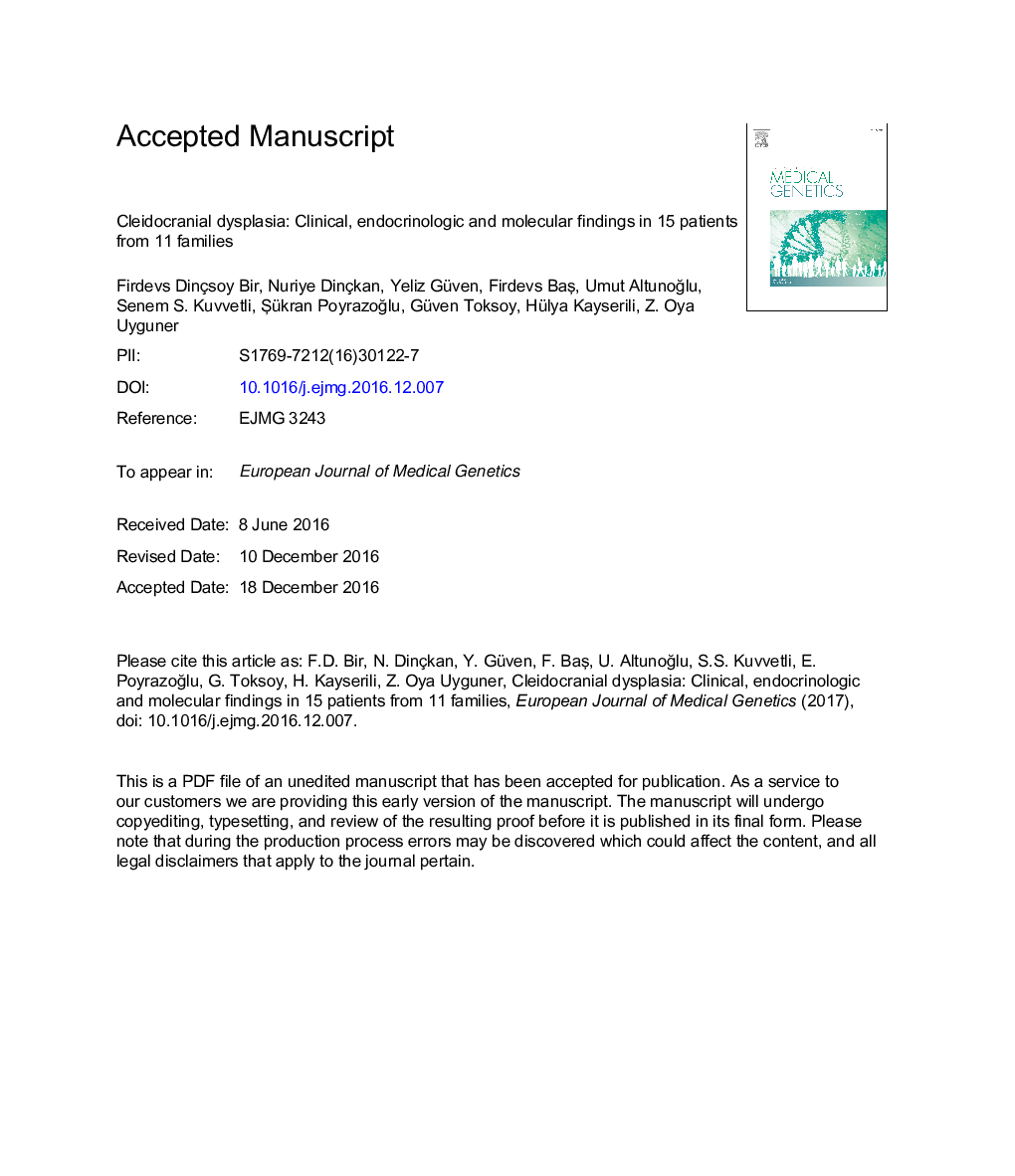| Article ID | Journal | Published Year | Pages | File Type |
|---|---|---|---|---|
| 5589079 | European Journal of Medical Genetics | 2017 | 19 Pages |
Abstract
Cleidocranial dysplasia (CCD) is an autosomal dominant disorder characterized by skeletal anomalies such as delayed closure of the cranial sutures, underdeveloped or absent clavicles, multiple dental abnormalities, short stature and osteoporosis. RUNX2, encoding Runt DNA-binding domain protein important in osteoblast differentiation, is the only known gene related to the disease and identified as responsible in 70% of the cases. Our clinical evaluations revealed that short stature present at a rate of 28.6%, osteoporosis at a rate of 57.1% and osteopenia at 21.4%. In this study, RUNX2 sequencing revealed nine different variations in 11 families, eight being pathogenic of which one was novel gross insertion (c.1271_1272ins20) and one other being predicted benign in frame gross deletion (c.241_258del).
Related Topics
Life Sciences
Biochemistry, Genetics and Molecular Biology
Genetics
Authors
Firdevs Dinçsoy Bir, Nuriye Dinçkan, Yeliz Güven, Firdevs BaÅ, Umut AltunoÄlu, Senem S. Kuvvetli, Åükran PoyrazoÄlu, Güven Toksoy, Hülya Kayserili, Z. Oya Uyguner,
